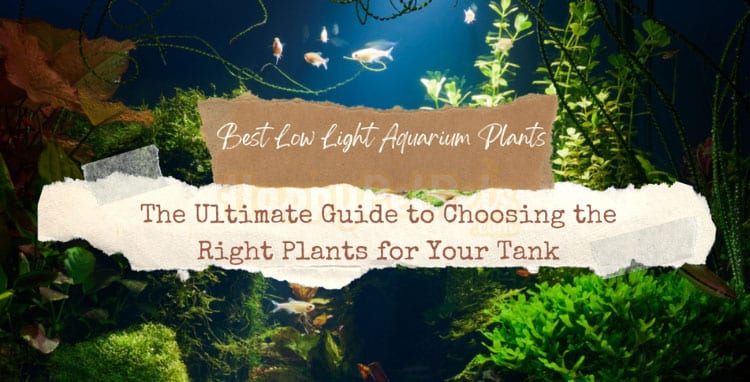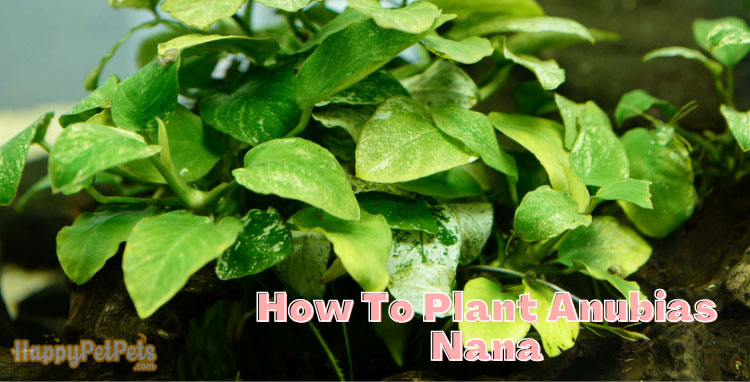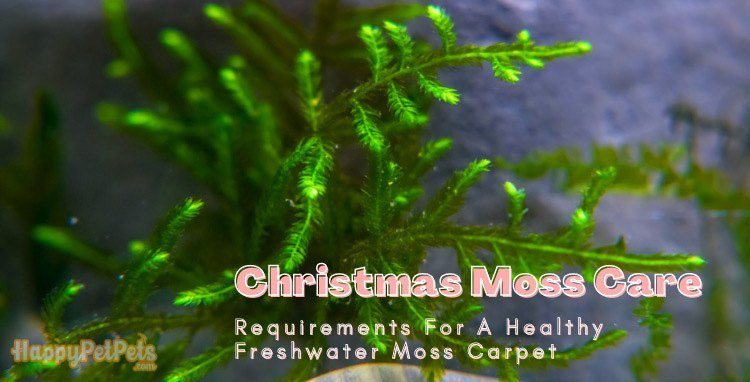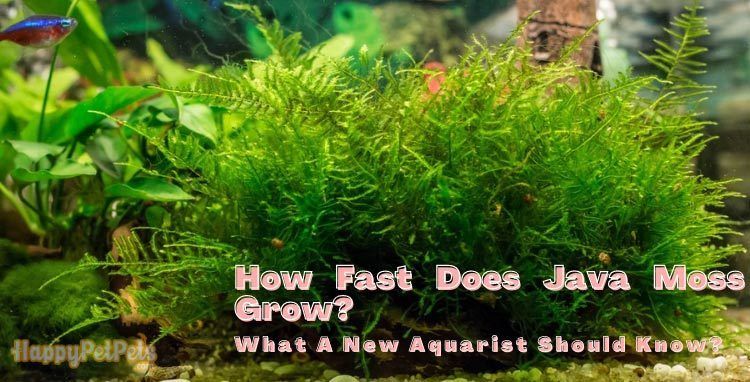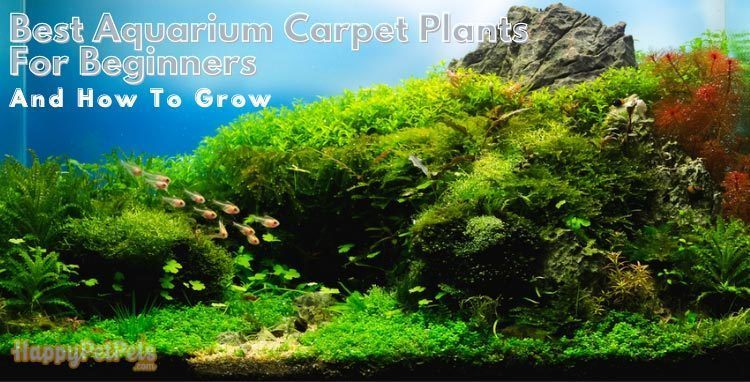Plants are an essential addition to any Betta fish tank. Not only do they create a beautiful and natural environment for your Betta, but they also provide numerous benefits that help maintain a healthy and thriving ecosystem. In this guide, we will explore the importance of adding live and floating plants to your Betta fish tank, the best plants for Betta fish, and tips for taking care of them. Whether you are a beginner or an experienced Betta fish owner, this guide will provide you with valuable information to enhance your Betta fish tank’s beauty and health.Adding live and floating plants to your Betta fish tank helps to simulate their natural habitat, providing a sense of comfort and security for these beautiful creatures. Live plants, such as Java Fern and Anubias, help to oxygenate the water, which is crucial for the health of your Betta fish. Floating plants, such as Duckweed and Water Lettuce, help to absorb excess nutrients in the water, helping to maintain good water quality. Not only do plants benefit your Betta fish, but they also help to create a stunning display of color and texture in your aquarium.As you read through this guide, we will discuss the best plants for Betta fish, their benefits, and how to take care of them to ensure they thrive in your aquarium. Whether you are looking to create a beautiful and natural environment for your Betta fish or want to provide a healthy and thriving ecosystem, adding live and floating plants to your Betta fish tank is an excellent way to achieve both.
Via YouTube by Girl Talks Fish: 7 Popular Plants for Betta Fish You Need to Try
Best Plants for Betta Fish
Betta fish, also known as Siamese fighting fish, are one of the most popular aquarium fish in the world. These colorful and elegant fish are known for their long, flowing fins and striking appearance. If you’re looking to create a beautiful and healthy environment for your Betta fish, adding live plants to your tank is an excellent option. Not only do plants enhance the beauty of your aquarium, but they also provide many benefits for your Betta fish.

Benefits of Live Plants in Betta Fish Tanks:
Adding live plants to a Betta fish tank can provide numerous benefits for both the fish and the aquarium’s ecosystem. Here are some of the advantages of incorporating live plants in a Betta fish tank:
- Oxygenation: Plants produce oxygen through photosynthesis, which helps to keep the water in your tank oxygenated and healthy for your Betta fish.
- Filtration: Live plants absorb ammonia, nitrates, and other harmful substances from the water, helping to keep the water quality in your tank stable.
- Natural Habitat: Live plants provide a natural and comfortable habitat for Betta fish, which helps to reduce stress and promote their overall health and well-being.
- Aesthetics: Adding live plants to your Betta fish tank enhances the visual appeal of your aquarium, creating a beautiful and natural-looking environment for your fish.
- pH Stabilization: Some live plants, such as Java fern and Anubias, release natural compounds that can help to stabilize the pH level in the tank. This can help to prevent fluctuations in pH, which can be stressful for Betta fish.
- Stress Reduction: Studies have shown that adding live plants to a fish tank can help to reduce stress levels in fish, including Betta fish. The plants provide a natural and calming environment, which can help to alleviate stress and promote overall well-being.
Here are some of the best plants for Betta fish, along with their scientific names, common names, origins, skill levels, light levels, temperature ranges, flow rates, and CO2 requirements:
Java Moss (Vesicularia dubyana)
Java Moss (Vesicularia dubyana) is a popular choice for Betta fish tanks because of its low maintenance requirements and ability to grow in various tank conditions. This plant is a great option for Betta fish because its dense, branching structure provides a perfect hiding spot for fry and adult fish alike. It also helps to absorb harmful chemicals and provides oxygen to the water, creating a healthy environment for your fish.
- Common Name: Java Moss
- Origin: Southeast Asia
- Skill Level: Easy
- Light Level: Low to moderate
- Temperature Range: 59-86°F (15-30°C)
- Flow Rate: Low to moderate
- CO2 Requirement: Low
Java Moss can be grown by attaching it to a rock or driftwood or simply letting it float freely in the tank. It doesn’t require any special fertilizers or lighting, but it does need to be trimmed regularly to keep its shape. If left unchecked, it can quickly take over the tank, so be sure to keep it under control. Overall, Java Moss is an excellent choice for Betta fish tanks, providing both aesthetic appeal and functional benefits.
Anubias (Anubias barteri)
Anubias (Anubias barteri) is a popular choice for Betta fish tanks due to its hardy nature and ease of care. It has dark green leaves that provide a great contrast to other plants in the tank. Anubias is a slow-growing plant and does not require frequent pruning, making it an ideal choice for low-maintenance setups.
- Common Name: Anubias
- Origin: West Africa
- Skill Level: Easy
- Light Level: Low to moderate
- Temperature Range: 72-82°F (22-28°C)
- Flow Rate: Low to moderate
- CO2 Requirement: Low to none
Anubias is a rhizomatous plant, which means it grows from a horizontal stem called a rhizome. It can be attached to rocks, driftwood, or other decor in the aquarium using fishing line or glue. Anubias prefers low to moderate light and can tolerate a wide range of water conditions. However, it should be noted that Anubias can be susceptible to algae growth if exposed to too much light.
One of the benefits of Anubias is that it provides a great hiding spot for Betta fish, especially for those who prefer to stay near the bottom of the tank. It also produces small white flowers, although these are rare in aquarium settings. Overall, Anubias is a great choice for both beginner and experienced aquarists looking to add some greenery to their Betta fish tank.
Amazon Sword (Echinodorus amazonicus)
Amazon Sword (Echinodorus amazonicus) is a popular aquatic plant that is commonly used in aquariums, especially for larger tanks. It is known for its striking appearance, with long, narrow leaves that can grow up to 20 inches in length. This plant is native to the Amazon basin and can provide a natural feel to your aquarium.
- Common Name: Amazon Sword
- Origin: South America
- Skill Level: Moderate
- Light Level: Moderate to high
- Temperature Range: 72-82°F (22-28°C)
- Flow Rate: Moderate
- CO2 Requirement: Low to moderate
Amazon Sword is a moderately difficult plant to care for, requiring moderate to high light levels and a nutrient-rich substrate. It is important to provide this plant with adequate nutrients, either through the substrate or via regular fertilization. It prefers a moderate water flow rate and can tolerate a wide range of temperatures. CO2 supplementation is not necessary, but it can promote faster growth and a more vibrant coloration.
One of the benefits of Amazon Sword is its ability to absorb excess nutrients in the water, which can help to prevent algae growth and improve water quality. This plant can also provide shelter and hiding places for your Betta fish, as well as a natural environment for them to thrive in.
Water Wisteria (Hygrophila difformis)
Water Wisteria (Hygrophila difformis) is a popular choice for Betta fish tanks as it provides both aesthetic appeal and functional benefits. This plant is known for its bright green color and its ability to grow rapidly, making it a great option for filling out the space in your tank.
- Common Name: Water Wisteria
- Origin: Southeast Asia
- Skill Level: Easy
- Light Level: Low to moderate
- Temperature Range: 68-82°F (20-28°C)
- Flow Rate: Low to moderate
- CO2 Requirement: Low
Water Wisteria is a versatile plant that can be placed in the foreground or background of your tank, depending on your preference. It is also a floating plant, which means that it can be left to float on the surface of the water or anchored to the bottom of the tank with weights. This makes it an excellent choice for Betta fish, as they enjoy swimming in and around plants.
In addition to its aesthetic appeal, Water Wisteria also provides several benefits for your Betta fish tank. It helps to oxygenate the water, which is important for maintaining a healthy environment for your fish. It also helps to absorb excess nutrients and waste products, which can help to prevent algae growth and keep the water clean.
Java Fern (Microsorum pteropus)
Java Fern is an excellent choice for Betta fish tanks as it is easy to care for and can thrive in low light conditions. It has long, flowing leaves that provide a great hiding spot for Betta fish, making them feel secure. Java Fern also helps to oxygenate the water, making it a healthy environment for your fish.
- Common Name: Java Fern
- Scientific Name: Microsorum pteropus
- Origin: Southeast Asia
- Skill Level: Easy
- Light Level: Low to moderate
- Temperature Range: 68-82°F (20-28°C)
- Flow Rate: Low
- CO2 Requirement: Low
Java Fern is a popular plant among Betta fish owners due to its hardiness and adaptability. It can be grown as a rooted plant or attached to driftwood or rocks using fishing line or thread. Java Fern can tolerate a wide range of water conditions, making it a great choice for beginners.
This plant can grow up to 13 inches tall and has dark green, pointed leaves. Its rhizomes should not be buried in the substrate, as they will rot. Instead, the rhizome should be left exposed to the water, while the roots can be planted in the substrate.
Java Fern is an efficient oxygenator, absorbing carbon dioxide and releasing oxygen through photosynthesis. This plant also removes nitrates and other pollutants from the water, making it an excellent natural filtration system for Betta fish tanks.
Hornwort (Ceratophyllum demersum)
Hornwort (Ceratophyllum demersum) is an excellent plant for Betta fish tanks as it helps to keep the water clean and oxygenated. It is also easy to care for and can thrive in a wide range of conditions. Hornwort has a unique appearance, with thin, branching stems and delicate, feathery leaves that can provide a natural look to the aquarium.
- Common Name: Hornwort
- Origin: North America
- Skill Level: Easy
- Light Level: Low to high
- Temperature Range: 59-86°F (15-30°C)
- Flow Rate: Low to high
- CO2 Requirement: Low
Hornwort is an excellent choice for beginners as it does not require any special care or attention. It can grow rapidly and can help to absorb excess nutrients in the water, reducing the risk of algae growth. Hornwort can also provide a good hiding spot for Betta fish and other small fish, making them feel more secure.
Hornwort can tolerate a wide range of water conditions and can grow in low to high light levels. It is a floating plant, which means it does not require a substrate or planting. Simply let the stems float in the water, or anchor them to a rock or decoration if you prefer.
Cryptocoryne (Cryptocoryne wendtii)
Cryptocoryne (Cryptocoryne wendtii) is a popular choice for Betta fish tanks due to its ease of care and hardiness. It is a hardy plant that can tolerate a wide range of water conditions, making it ideal for beginner aquarists. The leaves of Cryptocoryne are oval-shaped and can range from green to red or brown depending on the variety.
- Common Name: Cryptocoryne
- Origin: Sri Lanka
- Skill Level: Easy
- Light Level: Low to moderate
- Temperature Range: 68-82°F (20-28°C)
- Flow Rate: Low to moderate
- CO2 Requirement: Low
Cryptocoryne prefers to be planted in substrate and may require fertilization to promote growth. It is a slow-growing plant and may take some time to establish itself in a new tank. However, once it has acclimated, it can grow to be quite large and provide a lush, natural look to the aquarium.
One of the benefits of Cryptocoryne is that it can help to reduce algae growth in the tank by competing for nutrients with the algae. It also provides a natural hiding place for Betta fish, helping them feel secure in their environment.
Dwarf Sagittaria (Sagittaria subulata)
Dwarf Sagittaria (Sagittaria subulata) is a popular plant choice for Betta fish tanks because of its small size and ability to thrive in a range of water conditions. This plant is native to North America and has grass-like leaves that create a lush carpet at the bottom of the tank. It is a hardy plant that is easy to care for and can help to maintain water quality by absorbing excess nutrients.
- Common Name: Dwarf Sagittaria
- Scientific Name: Sagittaria subulata
- Origin: North America
- Skill Level: Easy
- Light Level: Moderate to high
- Temperature Range: 68-82°F (20-28°C)
- Flow Rate: Low to moderate
- CO2 Requirement: Low
In addition to its aesthetic appeal, Dwarf Sagittaria can also provide hiding spots and spawning sites for Betta fish. This plant can be propagated by dividing the clumps and replanting them in different areas of the tank. It is important to avoid burying the plant’s crown and to keep it well-trimmed to prevent it from taking over the tank.
Marimo Moss Ball (Aegagropila linnaei)
Marimo Moss Ball, also known as Aegagropila linnaei, is a popular and unique plant that can add a fun and interesting element to Betta fish tanks. It is actually not a true moss but a type of algae that forms a ball shape due to its growth pattern. Marimo Moss Balls are extremely low maintenance, making them a great option for beginners or anyone looking for a simple yet eye-catching plant.
- Common Name: Marimo Moss Ball
- Origin: Japan, Northern Europe
- Skill Level: Easy
- Light Level: Low to moderate
- Temperature Range: 68-82°F (20-28°C)
- Flow Rate: Low to moderate
- CO2 Requirement: Low
Marimo Moss Balls are also beneficial for Betta fish tanks as they help to absorb nitrates and other pollutants from the water, creating a healthier environment for your fish. They are also soft and non-abrasive, making them safe for Betta fish fins.
To care for Marimo Moss Balls, simply give them a gentle squeeze in a container of clean water every couple of weeks to remove any debris or excess dirt. They can be placed on the substrate or left to float on the surface of the water.
Red Ludwigia (Ludwigia repens)
Red Ludwigia (Ludwigia repens) is a stunning plant that can add a pop of color to your Betta fish tank. Its leaves are a deep red color and can provide a nice contrast to green plants in your tank. This plant is easy to care for and can thrive in a wide range of water conditions.
- Common Name: Red Ludwigia
- Origin: North and Central America
- Skill Level: Easy
- Light Level: Moderate to high
- Temperature Range: 60-86°F (15-30°C)
- Flow Rate: Moderate
- CO2 Requirement: Low to moderate
Red Ludwigia can grow up to 20 inches (50 cm) tall, making it a great background plant in your Betta fish tank. It requires moderate to high light levels to maintain its vibrant red color, so be sure to place it near a light source. Red Ludwigia prefers a moderate flow rate and can benefit from occasional fertilization with liquid or root tabs.
When planting Red Ludwigia, be sure to bury the roots in the substrate while leaving the stem above ground. This plant can propagate through stem cuttings, so you can easily propagate it by cutting a stem and planting it in the substrate. With proper care, Red Ludwigia can provide a stunning focal point in your Betta fish tank.
Rotala (Rotala rotundifolia)
Rotala (Rotala rotundifolia) is a popular plant among Betta fish keepers due to its vibrant color and unique shape. It has narrow, reddish leaves that can add a pop of color to any aquarium. Rotala is a relatively easy plant to care for, making it a great option for both beginners and experienced aquarists.
- Common Name: Rotala
- Origin: Southeast Asia
- Skill Level: Easy
- Light Level: Moderate to high
- Temperature Range: 68-82°F (20-28°C)
- Flow Rate: Moderate
- CO2 Requirement: Low to moderate
To ensure that Rotala thrives in your Betta fish tank, it is important to provide it with moderate to high lighting and a moderate water flow rate. The plant prefers a temperature range of 68-82°F (20-28°C) and a low to moderate CO2 requirement. With the right care, Rotala can grow tall and bushy, creating a stunning focal point in your aquarium.
Brazilian Pennywort (Hydrocotyle leucocephala)
Brazilian Pennywort, also known as Hydrocotyle leucocephala, is a popular and versatile plant for Betta fish tanks. It can be used as a floating plant or rooted in the substrate, making it a great choice for aquariums of all sizes. This plant features small, round leaves that grow in clusters along long, thin stems.
- Common Name: Brazilian Pennywort
- Origin: South and Central America
- Skill Level: Easy
- Light Level: Low to high
- Temperature Range: 68-82°F (20-28°C)
- Flow Rate: Low to high
- CO2 Requirement: Low
Brazilian Pennywort is an excellent option for Betta fish tanks, as it provides both shade and shelter for the fish. This plant is easy to care for and grows quickly, making it an ideal option for beginner aquarists. It also helps to oxygenate the water and remove harmful toxins, making it beneficial for the overall health of your Betta fish.
Moneywort (Bacopa monnieri)
Moneywort (Bacopa monnieri) is a popular live plant for Betta fish tanks due to its ease of care and attractive appearance. The plant has long stems with bright green, oval-shaped leaves that are slightly rounded at the tip. Moneywort grows quickly and is great for adding color and dimension to the aquarium.
- Common Name: Moneywort
- Origin: South and Central America, India
- Skill Level: Easy
- Light Level: Medium to high
- Temperature Range: 65-82°F (18-28°C)
- Flow Rate: Low to moderate
- CO2 Requirement: Low
In addition to its aesthetic value, Moneywort also helps to maintain good water quality in the aquarium. The plant absorbs nutrients from the water, reducing the growth of algae and helping to keep the water clear. Moneywort can also provide shelter and hiding places for Betta fish, helping to reduce stress and improve their overall health.
When caring for Moneywort, it’s important to provide it with adequate lighting and nutrient-rich substrate. The plant can be propagated easily by taking stem cuttings and replanting them in the substrate. Moneywort also benefits from regular pruning to keep it from becoming too dense and to promote healthy growth.
Water Sprite (Ceratopteris thalictroides)
Water Sprite (Ceratopteris thalictroides) is a versatile plant that can thrive in a variety of aquarium setups, making it a great choice for Betta fish tanks. It is easy to care for and can grow rapidly, providing ample coverage for your fish. Water Sprite can be grown both as a floating plant or planted in substrate.
- Common Name: Water Sprite
- Origin: Cosmopolitan
- Skill Level: Easy
- Light Level: Low to high
- Temperature Range: 68-82°F (20-28°C)
- Flow Rate: Low to high
- CO2 Requirement: Low to high, depending on lighting and growth rate
Water Sprite can provide a natural look to your aquarium as its delicate and feathery leaves move with the water flow. It can also serve as a natural filter, as it absorbs nitrates and other toxins from the water, improving water quality. To care for Water Sprite, simply provide it with a well-lit environment and regular water changes. It can also benefit from occasional fertilization to support its growth.
Dwarf Hairgrass (Eleocharis parvula)
Dwarf Hairgrass (Eleocharis parvula) is a popular aquatic plant that is well-suited for Betta fish tanks. This plant has thin, grass-like leaves that form dense clusters, creating a lush and natural-looking environment for your fish.
- Common Name: Dwarf Hairgrass
- Origin: North America, South America
- Skill Level: Intermediate
- Light Level: Moderate to high
- Temperature Range: 68-82°F (20-28°C)
- Flow Rate: Low to moderate
- CO2 Requirement: Low to moderate
Dwarf Hairgrass is a popular choice for aquascaping due to its low maintenance and hardiness. It requires moderate to high lighting and can benefit from CO2 supplementation, but can also thrive in lower light conditions. This plant also helps to oxygenate the water and absorb nutrients, making it a great addition to any Betta fish tank.
To plant Dwarf Hairgrass, simply place the plant into the substrate and ensure that the roots are covered. It will quickly spread and form a lush carpet that your Betta fish will love to explore. Regular trimming and maintenance will keep the plant healthy and looking its best.
Banana Plant (Nymphoides aquatica)
Banana Plant (Nymphoides aquatica) is a unique plant that is ideal for Betta fish tanks. This plant is named after its banana-shaped roots, which are used to anchor it to the substrate. The banana plant has long, thin leaves that are green in color with a slight red tint. It is a low maintenance plant that can adapt to a wide range of lighting and water conditions, making it ideal for beginners.
- Common Name: Banana Plant
- Origin: North America
- Skill Level: Easy
- Light Level: Low to high
- Temperature Range: 68-82°F (20-28°C)
- Flow Rate: Low to moderate
- CO2 Requirement: Low
The banana plant is known for its ability to remove toxins from the water, making it a great addition to Betta fish tanks. The plant provides a natural hiding spot for Betta fish, which helps to reduce their stress levels. It is also a slow-growing plant, which means it requires minimal pruning. The banana plant can be grown either fully submerged or partially submerged in water.
Guppy Grass (Najas guadalupensis)
Guppy Grass (Najas guadalupensis) is a popular floating plant that is commonly found in Betta fish tanks. It is easy to care for and can quickly spread, providing a lush and natural look to the aquarium. The long, thin leaves of Guppy Grass can provide an excellent hiding place for Betta fish, as well as a source of food for them.
- Common Name: Guppy Grass
- Scientific Name: Najas guadalupensis
- Origin: North and Central America
- Skill Level: Easy
- Light Level: Moderate to high
- Temperature Range: 65-82°F (18-28°C)
- Flow Rate: Low to moderate
- CO2 Requirement: Low to moderate
Guppy Grass can grow up to 10 inches long, and its stems can form a dense mat on the water’s surface, providing shade and cover for your Betta fish. It is also known for its water-purifying properties, helping to remove excess nutrients and keep the aquarium clean. Guppy Grass is a versatile plant that can thrive in a wide range of water conditions, making it an ideal choice for beginner and experienced Betta fish keepers alike.
Vallisneria (Vallisneria spiralis)
Vallisneria (Vallisneria spiralis) is a popular aquatic plant known for its long, thin leaves that can grow up to 3 feet in length. It is an excellent choice for Betta fish tanks as it provides hiding places for the fish and helps to oxygenate the water. Vallisneria is also easy to care for and can thrive in a variety of conditions.
- Common Name: Vallisneria
- Origin: North America, Asia, Europe, Africa
- Skill Level: Easy
- Light Level: Low to high
- Temperature Range: 68-82°F (20-28°C)
- Flow Rate: Low to high
- CO2 Requirement: Low
Vallisneria can be grown in gravel, sand or aquarium substrate, and will spread quickly under good conditions. It is a great choice for Betta fish tanks, as it is easy to care for and provides a natural look to the aquarium. The plant does well with moderate to high light levels but can tolerate low light conditions as well. When planting Vallisneria, make sure to leave enough space between the plants to allow for growth and spread.
Water Lily (Nymphaea sp.)
Water Lily (Nymphaea sp.) is a beautiful and easy-to-care-for plant that can add a touch of elegance to any Betta fish tank. The plant produces large, round leaves that float on the surface of the water, providing shade and shelter for your Betta. Water Lily plants also have lovely flowers that bloom in various colors, making them a visually stunning addition to any aquarium.
- Common Name: Water Lily
- Origin: Various regions across the world
- Skill Level: Easy to moderate
- Light Level: Moderate to high
- Temperature Range: 68-82°F (20-28°C)
- Flow Rate: Low
- CO2 Requirement: Low
<p “”=””>Water Lily plants prefer moderate to high levels of light and can benefit from the addition of a high-quality aquarium fertilizer. They are also sensitive to fluctuations in water quality, so it is important to maintain a consistent water temperature and pH level. Water Lily plants should be placed in a location where they can receive adequate light and be allowed to grow freely without being crowded by other plants.
Frogbit (Limnobium laevigatum)
Frogbit (Limnobium laevigatum) is a floating plant that can make a great addition to a Betta fish tank. This plant has round, flat leaves that resemble lily pads and can help to diffuse the light in the tank. Frogbit can also provide cover and shelter for Betta fish, and help to absorb excess nutrients in the water, which can improve water quality.
- Common Name: Frogbit
- Origin: South America
- Skill Level: Easy
- Light Level: Low to moderate
- Temperature Range: 68-82°F (20-28°C)
- Flow Rate: Low
- CO2 Requirement: Low
Frogbit is an easy-to-care-for plant that can thrive in a range of lighting conditions, from low to moderate light. It prefers still or slow-moving water and can tolerate a wide range of temperatures, making it suitable for Betta fish tanks. Frogbit doesn’t require CO2 supplementation, and it can absorb excess nutrients in the water, which can help to prevent algae growth. When adding Frogbit to your tank, be sure to remove any dead or dying leaves regularly to maintain good water quality.
Plant Care Tips for a Betta Fish Aquarium
When it comes to caring for plants in a Betta fish aquarium, there are several factors to consider to ensure they thrive. Here are some practical tips for plant care in a Betta fish tank:
- Lighting Requirements: Live plants require adequate lighting to thrive. Betta fish tanks should have a light source that provides 8-12 hours of light per day. If natural light isn’t available, you can use a fluorescent or LED aquarium light. It’s important to choose a light that’s appropriate for the size of your tank and the plants you have.
- Substrate Options: Plants in a Betta fish tank need a substrate that can hold them in place and provide them with nutrients. Popular options include aquarium sand, gravel, and soil. Make sure to choose a substrate that’s appropriate for the type of plants you have and that won’t harm your Betta fish.
- Fertilization Techniques: Live plants require nutrients to grow and stay healthy. There are several ways to fertilize plants in a Betta fish tank, including liquid fertilizers, root tabs, and CO2 supplementation. It’s important to choose a fertilization method that’s appropriate for the plants you have and to follow the instructions carefully.
- Water Quality: Good water quality is crucial for both Betta fish and live plants. Make sure to test the water regularly and maintain appropriate pH levels. Proper filtration and water changes are also important for maintaining water quality and preventing the build-up of harmful substances that can harm your plants and fish.
- Maintenance: Regular maintenance is key to keeping your plants healthy and thriving. This includes trimming dead or dying leaves, removing debris from the substrate, and monitoring the growth of the plants. It’s also important to keep an eye on the Betta fish and ensure they aren’t damaging the plants or disturbing the substrate.
Pro Tip: When choosing plants for your Betta fish tank, select ones that have a similar temperature and pH range as your fish. This will ensure that both the fish and plants thrive in the same environment. Additionally, consider adding a small amount of aquarium-safe liquid fertilizer or root tabs to the substrate around your plants to promote healthy growth. Regularly trimming and pruning your plants will also help to prevent overgrowth and maintain a balanced ecosystem in your tank.
Conclusion
In conclusion, live plants are an essential addition to any Betta fish tank. They provide a natural environment for your fish, reduce stress, and improve water quality by absorbing excess nutrients and increasing oxygen levels. With a wide variety of plant species to choose from, there is something for every tank and every level of expertise.To ensure the best possible care for your plants and Betta fish, it is important to follow the plant care tips outlined in this article. From lighting requirements to substrate options and fertilization techniques, taking care of your plants will result in a healthier and more vibrant ecosystem for your fish.We encourage you to share your own experiences with live plants in your Betta fish tank in the comments below. And if you found this article helpful, please share it with your fellow Betta fish enthusiasts so that they too can create a natural and healthy environment for their fish.
Also reading:
- https://happypetpets.com/best-low-light-aquarium-plants/
- https://happypetpets.com/how-to-plant-anubias-nana/
- https://happypetpets.com/christmas-moss-care/
- https://happypetpets.com/how-fast-does-java-moss-grow/

